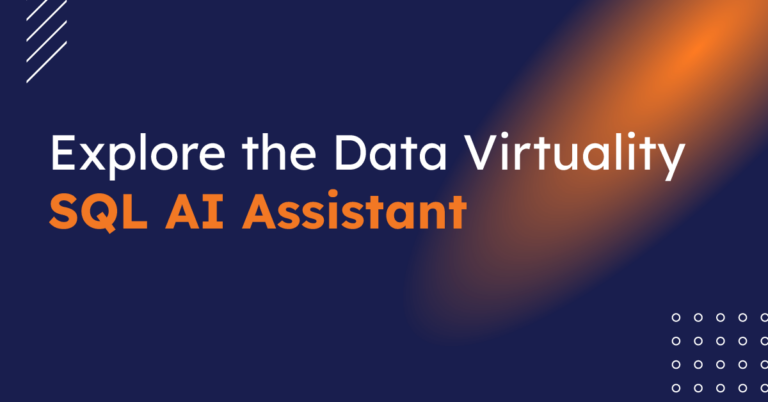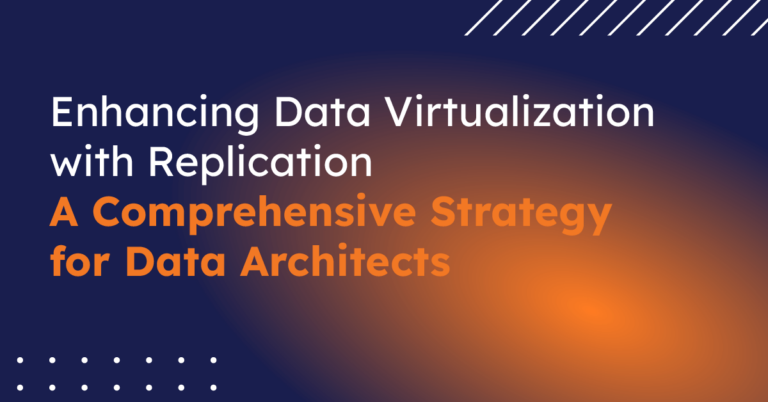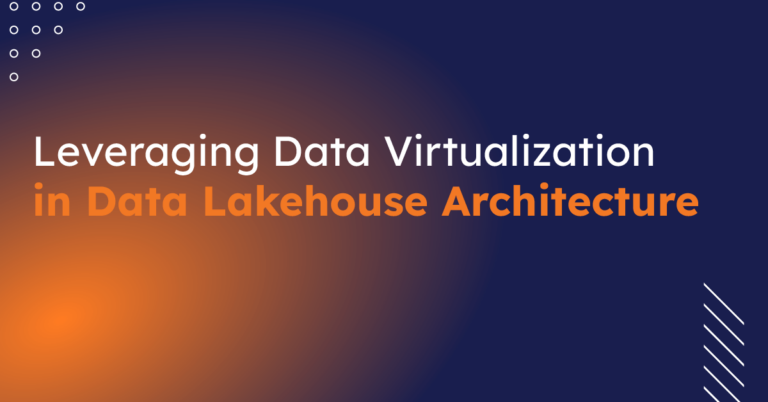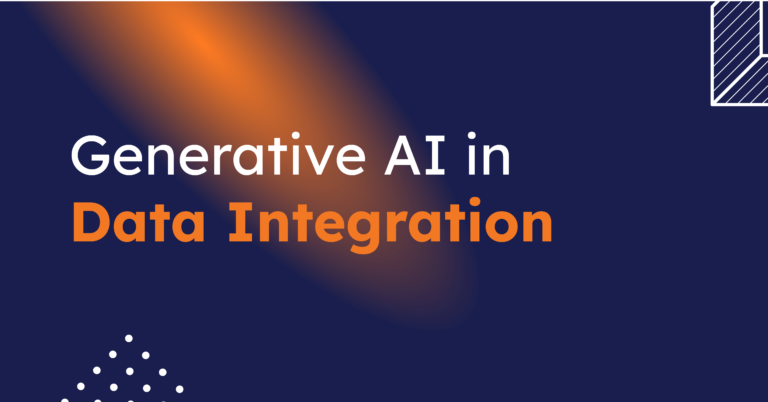
CData Software Acquires Data Virtuality to Modernize Data Virtualization for the Enterprise
Data Virtuality brings enterprise data virtualization capabilities to CData, delivering highly-performant access to live data at any scale.
Explore how you can use the Data Virtuality Platform in different scenarios.
Learn more about the Data Virtuality Platform or to make your work with Data Virtuality even more successful.
Insights on product updates, useful guides and further informative articles.
Find insightful webinars, whitepapers and ebooks in our resource library.
Stronger together. Learn more about our partner programs.
Read, watch and learn what our customers achieved with Data Virtuality.
In our documentation you will find everything to know about our products
Read the answers to frequently asked questions about Data Virtuality.
In this on-demand webinar, we look at how a modern data architecture can help data scientists to be faster and to work more efficiently.
Learn more about us as a company, our strong partner ecosystem and our career opportunities.
How we achieve data security and transparency
In recent years, the data integration and management industry has witnessed an increasing interest in data virtualization. While proponents of the technology understand its true potential, many potential adopters remain swayed by marketing buzzwords, often leading to a skewed perception of its real benefits.
Data virtualization, at its core, aims to provide businesses with a seamless way to access and manage data from various sources. Yet, the way it is marketed still largely highlights the concepts easily digestible for the business side, such as real-time data access and the promise of not having to move or store additional data, thus saving on costs and complexity.
While these benefits can be appealing to business or high-level decision-makers, and certainly also have their value, they don’t capture the full picture for those deeply involved in data integration implementation.
For instance, while real-time data is undoubtedly essential, it only represents a small fraction of the overall data integration use case. Historical data analysis, which often doesn’t require real-time access, plays a pivotal role for many businesses.
Furthermore, the notion of “not moving data” may not resonate with experienced data practitioners. There are several legitimate scenarios where data movement is justified, be it for business purposes like data cleansing or technical reasons like using a robust database for computation.
So, what then is the most central advantage of data virtualization?
It’s the declarative approach. Traditional data integration methods require specifying every step data should go through to be integrated. This step-by-step approach can be tedious and prone to errors, particularly if requirements change, leading to adaptations at multiple steps.
In contrast, data virtualization uses a declarative method, i.e. a method that abstracts away the control flow for logic required for software to perform an action. Instead of defining each step, practitioners describe the desired result and the software builds the steps to achieve that result. If you want a different result, change the description, and the intermediate steps adjust accordingly. This approach is primarily what can accelerate processes up to five times.
It’s akin to using SQL databases, where you describe the outcome and let the database handle the intricate process. Imagine a world without SQL databases, where each query demands manual programming of all the individual steps in the query plan, and reprogramming them when the query requirements change — sounds like a horror scenario to any database person, doesn’t it? However, this is how things are still largely done in the ETL/ELT-centric world. This is what data virtualization solves and that’s the main difference data virtualization makes in data integration.
While buzzwords like “real-time” and “no data movement” might dominate the narrative around data virtualization, it’s vital to delve deeper to appreciate its full potential. By understanding its core benefits, especially the declarative approach, businesses can truly leverage the technology’s capabilities, resulting in more efficient and effective data integration strategies.
Interested in exploring the full potential of data virtualization for your business? Try the Data Virtuality Platform for 30 days, absolutely free. Experience firsthand the power of the declarative approach in action.

Data Virtuality brings enterprise data virtualization capabilities to CData, delivering highly-performant access to live data at any scale.

Discover how integrating data warehouse automation with data virtualization can lead to better managed and optimized data workflows.

Discover how our ChatGPT powered SQL AI Assistant can help Data Virtuality users boost their performance when working with data.

While caching offers certain advantages, it’s not a one-size-fits-all solution. To comprehensively meet business requirements, combining data virtualization with replication is key.

Explore the potential of Data Virtuality’s connector for Databricks, enhancing your data lakehouse experience with flexible integration.

Generative AI is an exciting new technology which is helping to democratise and accelerate data management tasks including data engineering.
Leipzig
Katharinenstrasse 15 | 04109 | Germany
Munich
Trimburgstraße 2 | 81249 | Germany
San Francisco
2261 Market Street #4788 | CA 94114 | USA
Follow Us on Social Media
Our mission is to enable businesses to leverage the full potential of their data by providing a single source of truth platform to connect and manage all data.